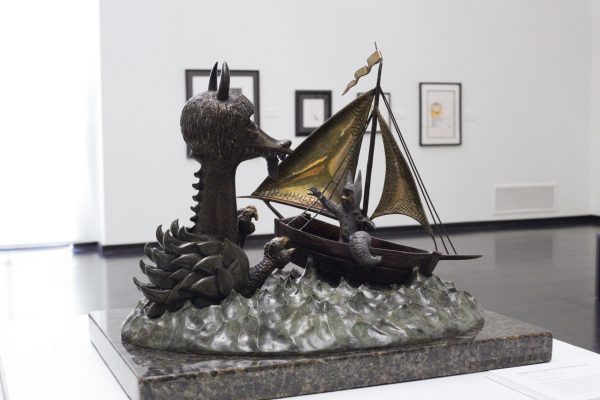The Walker keeps things fresh
Classical versus contemporary art in museums are often heated interests in all ranges of art lovers. This past year I have been to several prestigious museums, some of them more than once. During these trips I have noticed many trends within the museums and a changing preference in my friend’s opinions regarding classical and contemporary artwork.
Throughout the museums I was blessed to have my friend, Abby, with me. It was interesting to watch her change in tastes as she surveyed one museum after another. She was not too impressed with the artwork at our first museum, The Walker Art Center, in Minneapolis.
This museum switches out its main gallery spaces every few months to show different contemporary art movement such as Pop Art and Hippie Modernism. She found the Pop Art from the ‘50s and ‘60s to be too simple, and I recall her finding it silly how the simple works were in a museum.
She had some valid points and like I said in the last article, all art is subjective. But over the course of two days, I witnessed her appreciation for more contemporary styles grow.
The next day we went to the Minneapolis Institute of Art, which is filled with classical works, historical art from different culture, such as China and a modest contemporary/modern art section.
When being attracted to different classical works, she seemed to gravitate more toward works that showed painterly applications such as heavy brush strokes, rather than smoothed out, refined styles. She began to enjoy painted sea and landscapes.
The smallness of the modern section was a disappointment to her. She mentioned how she missed the bold colors and political statements from the Pop Art exhibition.
This trend of her shifting appreciation from classical to contemporary art continued to accelerate. As we revisited the Walker Art Center and Minneapolis Art Center, we had much more fun at the Walker.
There was a whole new show there, whereas the Minneapolis Art Center had all of the same artwork. A person can go to the Institute of Art year after year and see almost the same show every time. The way museums should cycle artwork has been a debate for a long time.
The Whitney Museum of American Art in New York promised to only collect new contemporary art when it was founded in 1930, but it quickly went against its promise. By cycling its artwork, it was valuing emerging artists and the growing concepts within art. Although the allure of priceless works such as Picasso’s started to hinder its progression. They couldn’t bear to let go of these priceless works to get new work, which could have been the next priceless artworks. They settled with deciding to maintain both, with a stronger emphasis in new contemporary work.
Abby and I both agreed that we enjoyed seeing new artwork over old. An old master’s work can be new to the unseen eye, but new concepts are rare in them.
After also going to museums in Chicago, she has an even greater preference to contemporary work than I do. I was interested in a Surrealism section, while she was bored, but loved the 2016 installation artwork across the hall. I was describing the meaning behind one of my recent paintings, and she called me out for having too simple of a concept. All this was coming from someone who used to criticize modern art.
I think to understand the art world today people need to just take an interest in it. The more art one sees, the more they will understand how to read and enjoy it. Even if at first you are dragged to museums like Abby, you may begin to crave seeing new contemporary ideas.
Billy Rerick is the cartoonist for The Dakota Student. He can be reached at [email protected]











